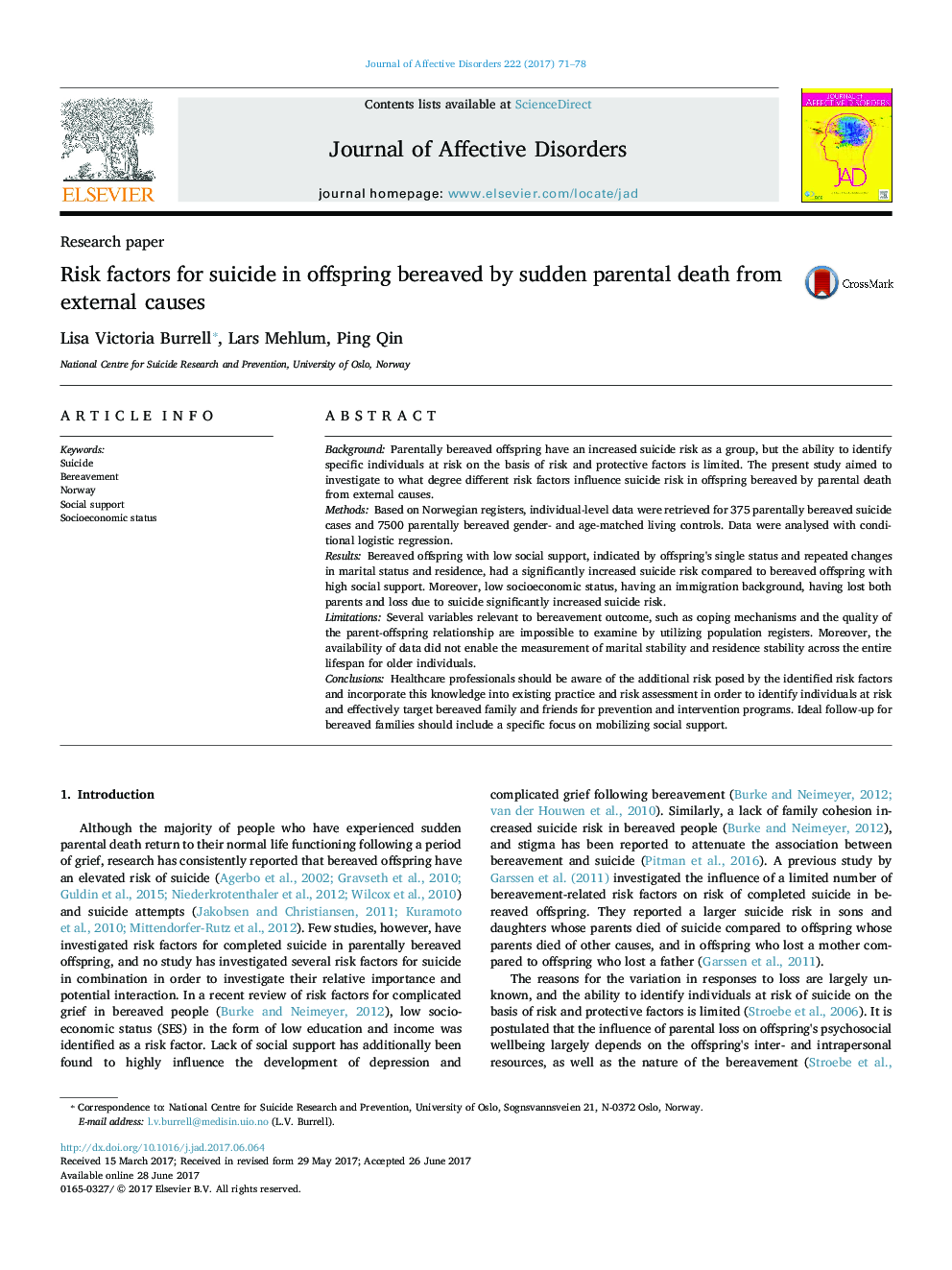| کد مقاله | کد نشریه | سال انتشار | مقاله انگلیسی | نسخه تمام متن |
|---|---|---|---|---|
| 5721845 | 1608103 | 2017 | 8 صفحه PDF | دانلود رایگان |
- Single status increased suicide risk, while marriage was protective against suicide.
- Both marital instability and residential instability increased suicide risk.
- Low socioeconomic status increased suicide risk in offspring with a single status.
- Losing both parents and losing a parent to suicide increased suicide risk.
- There were mostly insignificant gender and age differences.
BackgroundParentally bereaved offspring have an increased suicide risk as a group, but the ability to identify specific individuals at risk on the basis of risk and protective factors is limited. The present study aimed to investigate to what degree different risk factors influence suicide risk in offspring bereaved by parental death from external causes.MethodsBased on Norwegian registers, individual-level data were retrieved for 375 parentally bereaved suicide cases and 7500 parentally bereaved gender- and age-matched living controls. Data were analysed with conditional logistic regression.ResultsBereaved offspring with low social support, indicated by offspring's single status and repeated changes in marital status and residence, had a significantly increased suicide risk compared to bereaved offspring with high social support. Moreover, low socioeconomic status, having an immigration background, having lost both parents and loss due to suicide significantly increased suicide risk.LimitationsSeveral variables relevant to bereavement outcome, such as coping mechanisms and the quality of the parent-offspring relationship are impossible to examine by utilizing population registers. Moreover, the availability of data did not enable the measurement of marital stability and residence stability across the entire lifespan for older individuals.ConclusionsHealthcare professionals should be aware of the additional risk posed by the identified risk factors and incorporate this knowledge into existing practice and risk assessment in order to identify individuals at risk and effectively target bereaved family and friends for prevention and intervention programs. Ideal follow-up for bereaved families should include a specific focus on mobilizing social support.
Journal: Journal of Affective Disorders - Volume 222, November 2017, Pages 71-78
